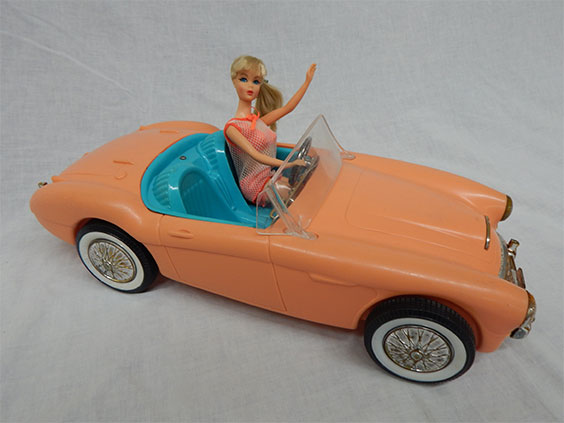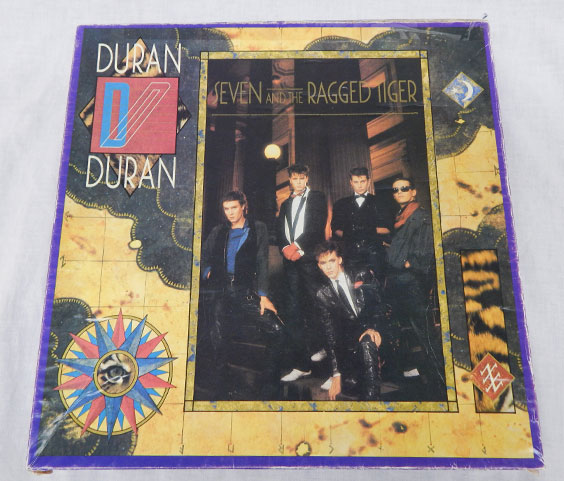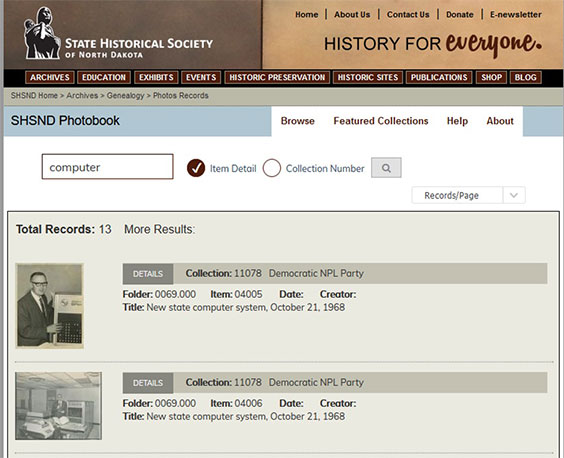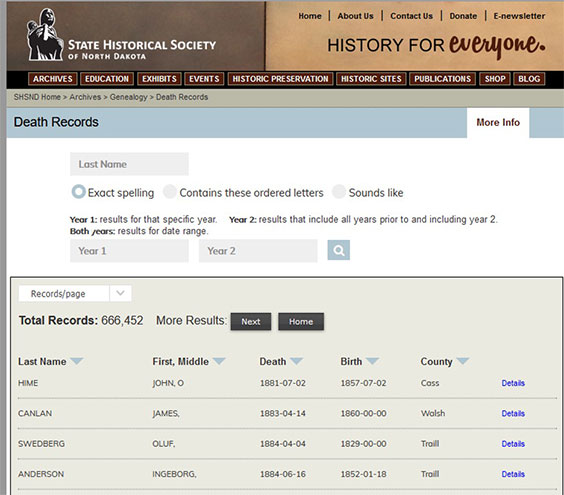Surveying the Museum Collecting Survey
Last year, the museum collections committee analyzed the current representation within the state collection and noticed there were particular gaps of objects from childhood and teenage years, most significantly those items from the 1960s to the present. The State Historical Society of North Dakota is also looking ahead and considering how much collections storage space we will need as we continue to collect objects into the future.
To help us get an idea of what the people of North Dakota would most like to be collected and preserved from their childhood and beyond, the staff began conducting an online survey in February to gather input from lifetime, current, and past North Dakotans, as well as visitors to the state, about what the State Museum should collect.
We have received many great responses since the survey launched, and here is a little about what we have learned so far. I hope you like stats and nostalgia as much as I do, because here we go!
Here are the results as of Aug. 10:
- 134 unique responses.
- Representation from 37 North Dakota counties, with the most responses from Burleigh (34) followed by Morton (8).
- The highest number of responses from participants born in the decades 1950-1959 (37) and 1960-1969 (32).
- 230 suggestions for toys.
- 239 suggestions for clothing.
- 234 suggestions for activities.
- 105 suggestions for “other,” i.e., stuff that didn’t quite fit anywhere else.
By object category, here are the top responses, as well as an assortment of other interesting answers.
Toys
Top responses: Barbie, GI Joe, Cabbage Patch dolls, Hot Wheels, LEGO toys, Lincoln Logs, toy vehicles
Random responses: Chatty Cathy dolls, color-changing toys, homemade toys, lawn darts, water baby dolls, Yu-Gi-Oh cards

Clothing
Top responses: Bell-bottoms, bib overalls, Hash jeans, jeans, jelly shoes, Air Jordans, scrunchies
Random responses: Toe socks, stirrup leggings, skinny jeans, paisley, hand-me-downs, Uggs
Activities
Top responses: Bikes, roller skating, baseball, books, board games, video games/game consoles (Super Mario Bros., Space Invaders), phonographs
Random responses: Cartoons on Saturday mornings, 8-tracks, chalk drawing, drive-in movies, local music bands

Other
Top responses: CD & cassette Walkman, inflatable furniture, boombox, clamshell VHS tapes, ordering Scholastic books from a catalog, teen magazines (Tiger Beat, J-14, Bop)
Random responses: The ”Macarena,” TV dinners, duck-and-cover training pamphlets, food and drink packaging, hairstyles (the Rachel, mullet, bouffant, etc.)
As someone who falls into the 1990-1999 age range, it has been wonderful seeing the creative, thoughtful suggestions both from my peers and people born in the decades before and after me. Not only are the responses helpful for us at the museum as we look to the future of the collection, they are also a great way to learn about what objects, activities, styles, and clothing have been important to children in North Dakota throughout the decades.
Is there something from your childhood that you think we should collect? Does it look like your county or age group needs more representation? Head to the collections survey here and make your voice heard!
If you would like to donate to the State Historical Society museum collection, be it a My Little Pony, bellbottoms, a boombox or anything in between, you can complete our Potential Donation Questionnaire here.



